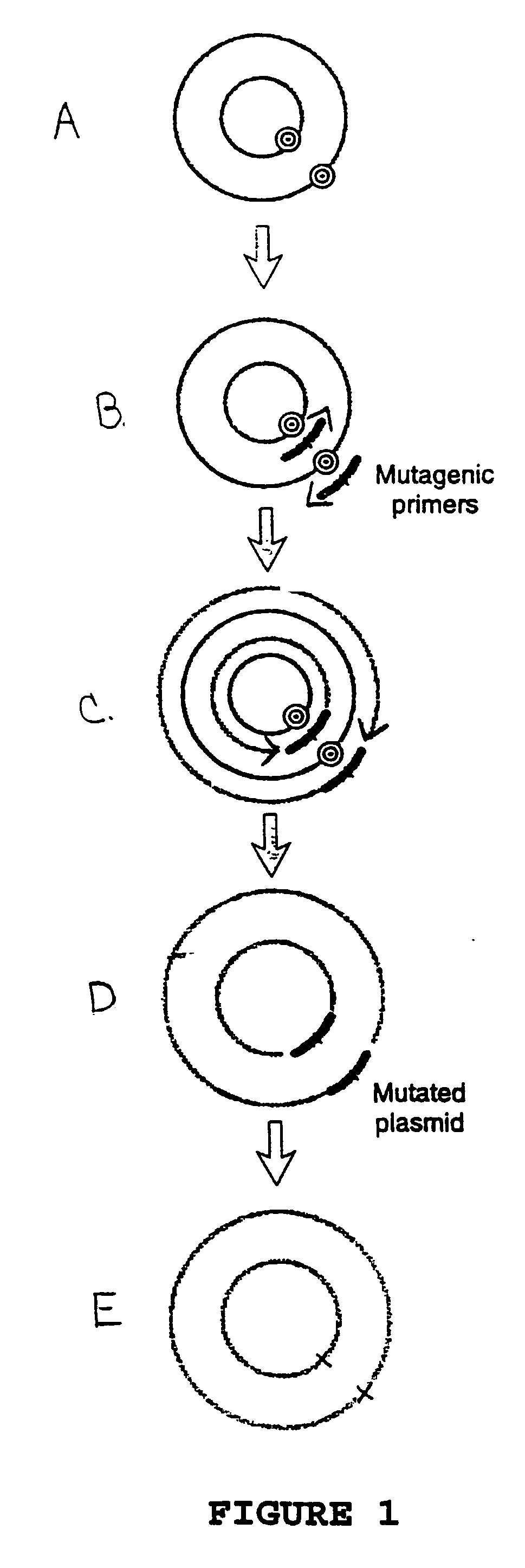Circular site-directed mutagenesis
a site-directed mutagenesis and site-directed technology, applied in the field of site-directed mutagenesis improvement methods, can solve the problems of adverse effects, increase in the number of cycles, increase in the rate of spontaneous second-site mutations, etc., and achieve the effect of high efficiency
- Summary
- Abstract
- Description
- Claims
- Application Information
AI Technical Summary
Benefits of technology
Problems solved by technology
Method used
Image
Examples
examples
CONTROL REACTIONS
[0037] A procedure for carrying out the site-directed mutagenesis of plasmid pWhitescript.TM. 5.7-k.b. is given below. This procedure may be readily adapted for the site-directed mutagenesis of other molecules using different primers. The plasmid pWhitescript.TM. 5.7-k.b. encodes a mutant lacZ gene with point mutation that produce a lacZ minus phenotype. The primers are designed to "repair" this mutation so as produce a plasmid that gives rise to a lacZ positive phenotype in E. coli grown on indicator medium. Accordingly, pWhitescript.TM. 5.7-k.b. may be used as a control template in the kits of the invention
[0038] Setting Up the Reactions
[0039] 1. Synthesize two complementary oligonucleotides containing the desired mutation, flanked by normal nucleotide sequence, i.e., first and second mutagenic primers. Optionally, the primers are 5' phosphorylated and gel purified prior to use in the following steps.
[0040] 2. Prepare the control reaction as indicated below:
[0041]...
PUM
| Property | Measurement | Unit |
|---|---|---|
| volume | aaaaa | aaaaa |
| Temperature | aaaaa | aaaaa |
| volume | aaaaa | aaaaa |
Abstract
Description
Claims
Application Information
 Login to View More
Login to View More - R&D
- Intellectual Property
- Life Sciences
- Materials
- Tech Scout
- Unparalleled Data Quality
- Higher Quality Content
- 60% Fewer Hallucinations
Browse by: Latest US Patents, China's latest patents, Technical Efficacy Thesaurus, Application Domain, Technology Topic, Popular Technical Reports.
© 2025 PatSnap. All rights reserved.Legal|Privacy policy|Modern Slavery Act Transparency Statement|Sitemap|About US| Contact US: help@patsnap.com


